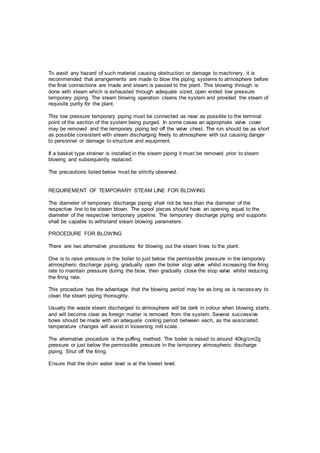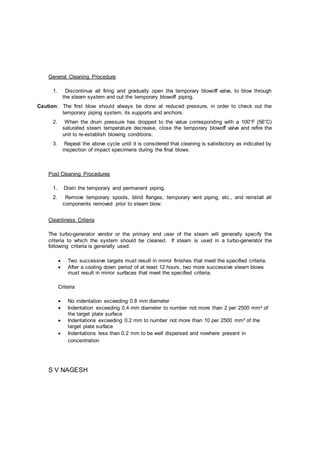Blowing steam lines is done to remove foreign matter from equipment and piping after erection. It involves heating and cooling cycles from steam flow to loosen debris. Target plates are used to monitor cleaning, with stainless steel plates for final blows until plates show no pitting from debris. Procedures involve gradually opening and closing valves while maintaining pressure or rapid opening and closing to induce thermal shock for cleaning. Safety precautions must be followed regarding piping supports and exhaust direction.





